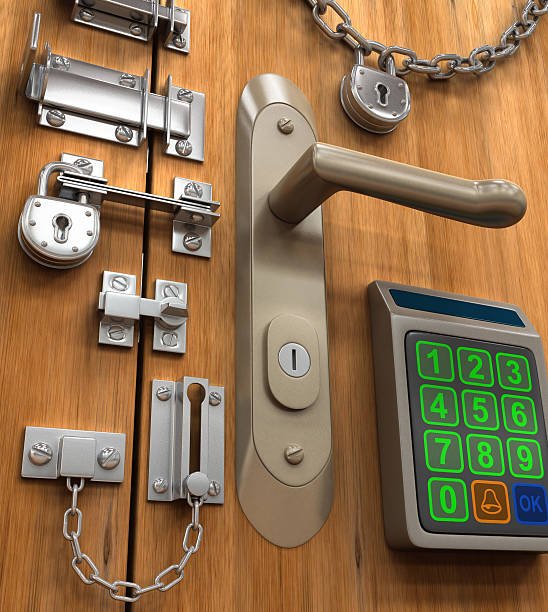
The term 'door barricade' or door safety gate can refer to a number of different measures employed to secure doors against forced entry, lock picking and ram-robbing, and even prevent crimes like house invasion and burglary. Door safety is normally used in government and commercial establishments, as well as in private residences. This includes physical barriers like physical locks, security bars, closed-circuit video cameras, and even electronic security systems. However, there are other uses of door safety gates that don't involve the use of locks or other locks. They could also include physical barriers like barbed wire, mesh or plastic fencing, or even real physical barriers like spikes, cement, or timber. Go now to this article and learn more about door barricade.
Barriers are a very common form of door barricade, used to keep people in or out of certain areas, or to limit entry to certain areas. Barricades are normally constructed using timber or metal, and the locking mechanisms used often rely on simple but highly effective keys, usually one or more keys fitted in a cylinder. Most of the time, these locks operate on two levels - the actual bar at the top level is called the top bar lock, whilst the lower bar is known as the bottom bar lock. On some models of barbed-wire barricades, both locks are just above the ground surface. This gives a very sturdy and secure barrier to people trying to force their way into your property here!
Another kind of door barricade is the hinged unit, which is similar to the mesh construction, and which generally consist of two horizontal hinged panels, with the bottom panel being able to fold up, when not required for secure closure. Often, these locks require only a single key to operate, rather than a combination. In some cases, the hinges on the panels might also offer a method of operation, though this is less common.
To break the door security bars, you need either a tool to remove the locks, or an axe or hatchet. While it would be very difficult to cut through metal, it is possible to chip the glass, or cause enough damage that the entire lock is dislodged, leaving the frame vulnerable to forced entry. This is why high-quality products should use tempered steel, because even the smallest chips can make them difficult to operate, and can easily shatter a whole section of glass.
There are many models of door barricade available, designed to resist different threats. For instance, the most popular types of locks and barriers are those that are designed to withstand sudden external impacts, such as from a ball or heavy object coming through a window, or from an explosion coming from outside. These models have a deep channel running through the middle of the bars, which channels the force away from the door, and keeps it closed during operation. On the other hand, if your application requires an inwards swing door, there are models that are specifically designed to withstand inwards impact. These models are also constructed using a channel - but unlike regular inwards swing doors, they have a strong outward pull and are thus more likely to breach than a regular out-the-way door.
The strength of the secondary door barricade is also very important, as it's often the factor that will determine whether or not an intruder is apprehended. Many models use heavy duty, military-style locks, which are designed to withstand the most severe impacts. But beyond strength, many models use a secondary locking system, such as deadbolts or other advanced locking mechanisms that are harder to force open with a standard key. Some models use multiple pins that are difficult to latch - but once secured, these locks can be opened by a standard key. This is why it is important for a security company to choose its models carefully. You may need to check out this article: https://en.wikipedia.org/wiki/Door_security to get more info on the topic.


